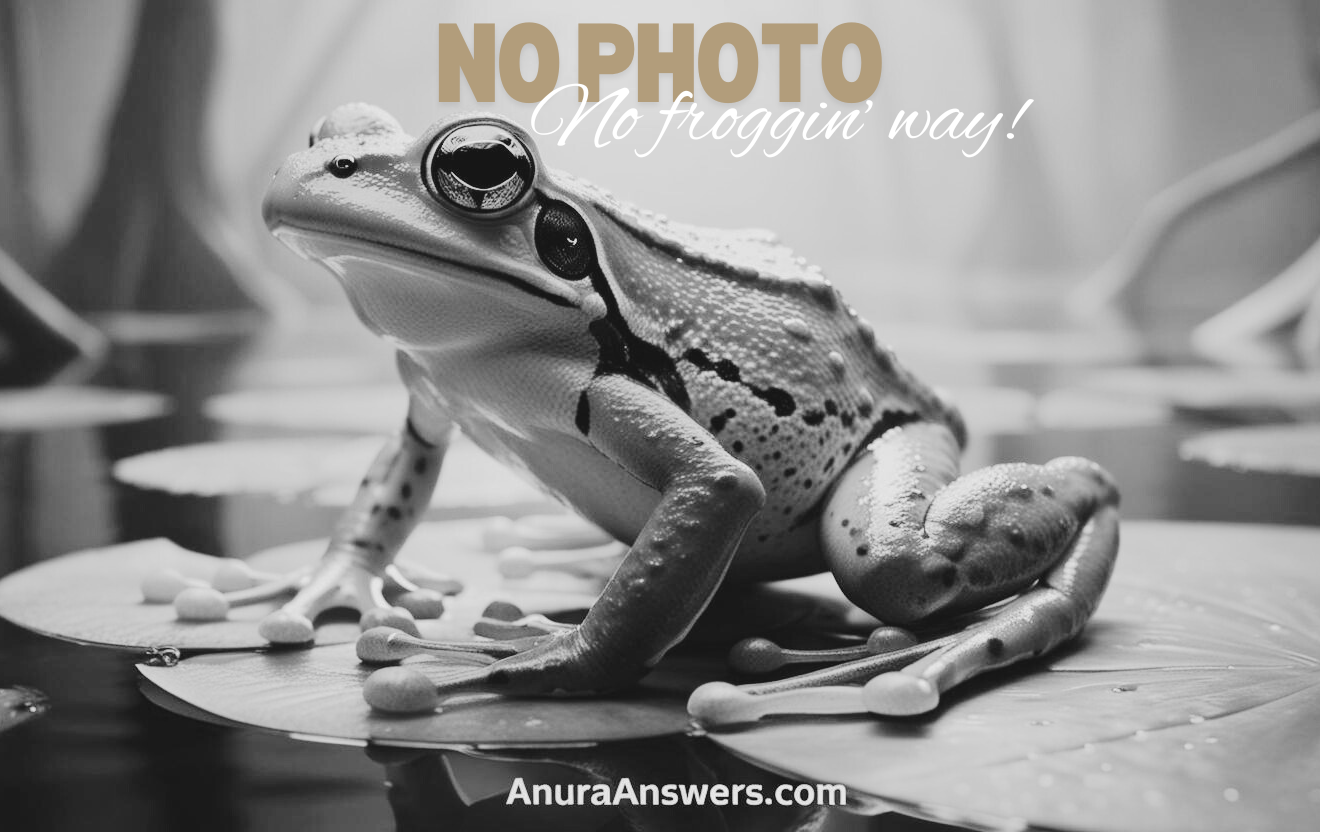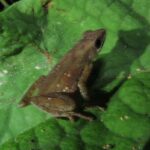- Hidden Wonders of the Brazilian Forests: The Enigmatic Ischnocnema Venancioi
- Taxonomy and Classification
- Natural Habitat: A Secret World Hidden Beneath the Forest Canopy
- Physical Characteristics: Master of Camouflage and Elegance
- Behavior and Life Cycle: Quiet Lives, Fascinating Strategies
- Ecological Role: Guardians of Forest Health
- Threats and Conservation Status: Fragility Amidst Rapid Change
- Cultural and Scientific Significance: Unknown Treasures Awaiting Discovery
- Conclusion: A Call for Awareness and Appreciation
Hidden Wonders of the Brazilian Forests: The Enigmatic Ischnocnema Venancioi#
Deep in the lush cloud forests of Brazil, where mist gently sweeps through emerald leaves, an elusive creature goes about its quiet existence unnoticed by many. Smaller than a thumb and exquisitely patterned, this amphibian marvel, known to science as Ischnocnema venancioi, thrives amidst shadows and softly whispered rains. Possessing unique traits and a discreet life hidden beneath layers of foliage, this frog provides essential insight into ecosystem health, revealing secrets as delicate and intricate as its own translucent skin. Ironically, despite its ecological importance, few know of its existence, and fewer still know its charming habits and adaptations.
Come journey beneath the verdant canopy, immserse yourself in the whispered hush of humid forests, as we uncover the life and legacy of the remarkable Ischnocnema venancioi.
Taxonomy and Classification#
First described in 1959, Ischnocnema venancioi belongs to the diverse family Brachycephalidae, a fascinating group of neotropical frogs known for their cryptic habits, direct reproductive methods, and often striking colorations. Within its genus, Ischnocnema, this species stands among dozens of cousins that share similar characteristics, yet each retains distinct niche adaptations and morphological features that allow them to uniquely prosper in their habitats.
The genus name Ischnocnema, derived from Greek meaning ‘slender-legged’, hints at an essential trait: the delicately structured limbs adapted for graceful yet swift movements through tangled understories and slippery surroundings. Named in honor of Brazilian naturalist Venâncio, the species epithet venancioi reflects respect for local conservation contributions, grounding its identity deeply within its native land.
Natural Habitat: A Secret World Hidden Beneath the Forest Canopy#
Ischnocnema venancioi is a true specialist of the humid forests of southeastern Brazil, primarily found in regions such as Espírito Santo, Rio de Janeiro, and adjoining areas that boast characteristic Atlantic Forest ecosystems. Within these protected landscapes, where moisture drips from an ever-present veil of mist, the frog finds its ideal refuge—a quiet realm often hidden from human eyes.
An Eden Beneath the Leaves#
This small amphibian chooses microhabitats confined to the lower strata of dense forests. It hides amidst dense ground vegetation, leaf litter, moss-covered logs, and organic detritus. The gentle babble of flowing streams and muted rainfall offer the perfect ambiance that supports its existence, creating a moisture-rich microclimate the species depends on for skin respiration, reproduction, and daily survival.
The selection of habitat by Ischnocnema venancioi is far from random. Each element of their chosen dwelling fulfills precise physiological and ecological needs. The abundant leaf litter, for example, not only camouflages their diminutive bodies from predators but also harbors a rich diversity of tiny invertebrates—their primary food source. Meanwhile, moss layers and decaying logs preserve humidity, allowing the frogs to breathe effortlessly through their sensitive skin in drying climates.
Physical Characteristics: Master of Camouflage and Elegance#
At a first glance, the diminutive form of Ischnocnema venancioi may fail to impress, but a closer appreciation reveals sophisticated elegance born of careful adaptation. An adult typically measures around 15–22 millimeters in length, making this species among the smaller frogs in its native Brazilian ecosystems.
Cryptic Coloration: Artistry in Survival#
The frog’s coloration is a veritable palette of subtle earth tones—muted shades of olive-green, russet-brown, gray, or silvery crescents blend seamlessly into surrounding leaf litter. Most individuals display variable patterns along their backs, including subtle spotting or mottling, augmenting their camouflage. Renowned for their adaptability in disguising themselves, spotting one in its natural environment requires patience and practiced eyes sharpened over years of field research.
The skin is finely textured, slightly granular, and exhibits humidity-dependent translucency, offering not only camouflage but effective respiration across their entire body surface. Vocal sacs in males are inconspicuous, reflective of their discrete vocal communication patterns indispensable during their secretive breeding seasons.
Behavior and Life Cycle: Quiet Lives, Fascinating Strategies#
Unlike typical pond-breeding frogs, Ischnocnema venancioi showcases fascinating reproductive adaptations. A defining trait in this family—and certainly for this species—is its direct development lifecycle. Instead of laying eggs that hatch into free-swimming tadpoles, these frogs lay terrestrial eggs concealed within moist foliage or rotting logs; their offspring emerge fully developed as miniature replicas of adults, skipping the tadpole stage altogether.
Secret Courtship Rituals#
Breeding seasons coincide with rainy periods when humidity peaks, possibly between October and February. Quiet, low-pitched calls emitted by males punctuate the sodden atmosphere, designed neither to attract attention from predators nor competitors too widely, instead resonating within close proximity to potential female partners. These soft yet distinctive calls are crucial, resonating through dense vegetation in search of receptive companions.
Once paired, females deposit a small clutch of eggs directly onto moist surfaces or leaf mats secluded from immediate danger. Parental care is minimal, yet the carefully chosen locations provide ample protection. After a few weeks of incubation, juveniles appear as tiny carbon copies of their adults, fully independent and immediately capable hunters of minute invertebrates thriving within the leaf litter micro-world.
Ecological Role: Guardians of Forest Health#
Tiny yet mighty, frogs like Ischnocnema venancioi embody essential ecological functions within their delicate habitats. Primarily insectivorous, these frogs control insect populations that could otherwise destabilize delicate plant communities or contribute to vector-borne diseases.
An Indicator of Environmental Health#
Frogs possess permeable skin and rely profoundly on environmental moisture, rendering them highly sensitive to ecological changes or pollution. Thus, Ischnocnema venancioi serves as a valuable bio-indicator, offering scientists critical insights about habitat integrity, climate health, and threats like chemical contamination or fungal diseases. Observing population declines or shifts in their distribution can forewarn conservationists and researchers of far-reaching ecological disturbances.
Threats and Conservation Status: Fragility Amidst Rapid Change#
Unfortunately, Ischnocnema venancioi does not escape the perils posed by modern human activity. The Atlantic Forest—Brazil’s biodiversity hotspot that hosts this species—is among the most threatened biomes worldwide, facing challenges from deforestation, habitat fragmentation, agricultural expansion, urban sprawl, and climate change-induced environmental shifts.
Currently categorized by IUCN as “Least Concern,” the status reflects relatively stable population metrics across its range, yet this should not offer false comfort. Continued anthropogenic pressure might quickly tip its conservation outlook into precarious territory. Active monitoring and habitat protection efforts become indispensable actions for ensuring long-term population viability.
Cultural and Scientific Significance: Unknown Treasures Awaiting Discovery#
Beyond ecological roles, species like Ischnocnema venancioi embody cultural significance, symbolizing healthy ecosystems and intact rainforests highly valued by indigenous and local communities. From a scientific standpoint, their lifestyles and physiological adaptations continually intrigue researchers aiming to decipher evolutionary pathways that allowed amphibians to diversify and adapt to terrestrial habitats independently.
Conclusion: A Call for Awareness and Appreciation#
The mysterious Ischnocnema venancioi may remain hidden from the casual observer, but its quiet, steady life beneath Brazilian forests speaks volumes about biodiversity, adaptation, and ecological resilience. It reminds us that even the smallest creatures play critical roles in nature’s grand tapestry and deserve focused conservation action from humanity.
A deeper understanding breeds appreciation; appreciation fuels conservation. As stewards, lovers, and advocates of wildlife, let us commit ourselves to protecting not only charismatic megafauna but also the tiny, hidden creatures whose stories, though less dramatic, matter just as powerfully. Join in the effort to conserve remarkable amphibian species like Ischnocnema venancioi, vital guardians of our shared planet.







